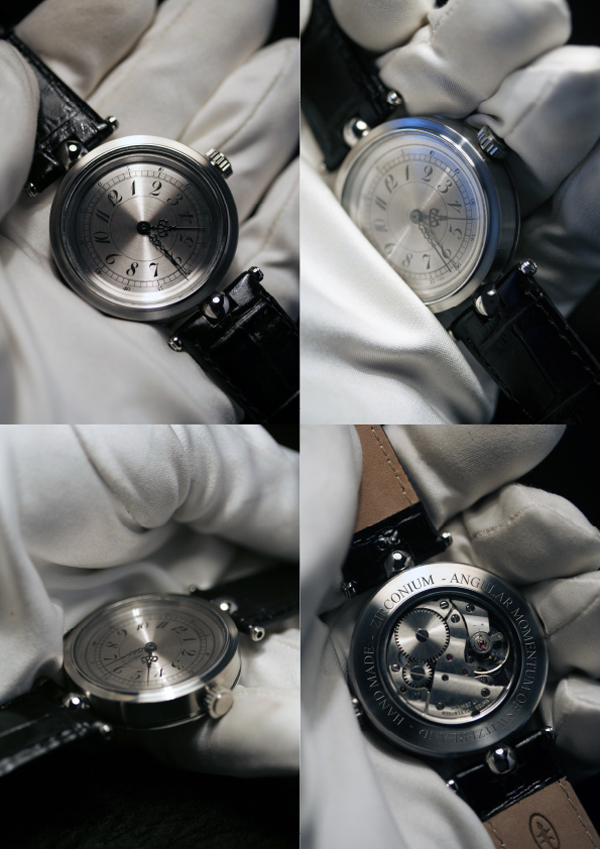2012/08/10 - Angular Momentum the new Zirconium Timepiece
Angular Momentum & Manu Propria has released a new timepiece, completely made of ZIRCONIUM metal.
Case, crown, dial, movement holder made of solid Zirconium, blued steel hands, black printed numbers, case diameter 38.00 mm. decorated historical hand-winding movement caliber FHF 96
Zirconium Zr 702
Zirconium has high affinity to oxygen that facilitates the formation of a protective oxide film which result a high corrosion resistant in the most acids. Zirconium is used in various applications in the nuclear industry. Furthermore in the chemical industry for valves, pumps, tubes and heat exchanger as well in the medical industry for the reason that zirconium is biocompatible and non toxic. Zirconium has the fourth lowest electronegativity, It‘s hardness (Mohs 5) is slightly below stainless steel.
Zirconium is a chemical element with the symbol Zr, atomic number 40 and atomic mass of 91.224. The name of zirconium is taken from the mineral zircon, the most important source of zirconium. It is a lustrous, gray-white, strong transition metal that resembles titanium.
Zirconium is mainly used as a refractory and opacifier, although minor amounts are used as alloying agent for its strong resistance to corrosion. Zirconium forms a variety of inorganic and organometallic compounds such as zirconium dioxide and zirconocene dichloride, respectively. Five isotopes occur naturally, three of which are stable. Zirconium compounds have no biological role.
Zirconium is a lustrous, grayish-white, soft, ductile and malleable metal which is solid at room temperature, though it becomes hard and brittle at lower purities. In powder form, zirconium is highly flammable, but the solid form is far less prone to ignition. Zirconium is highly resistant to corrosion by alkalis, acids, salt water and other agents. However, it will dissolve in hydrochloric and sulfuric acid, especially when fluorine is present. Alloys with zinc become magnetic below 35 K.
Zirconium‘s melting point is 1855 °C (3371 °F), and boiling point is 4371 °C (7900 °F).[6] Zirconium has an electronegativity of 1.33 on the Pauling scale.
Of the elements within d-block, zirconium has the fourth lowest electronegativity after yttrium, lutetium and hafnium.
At room temperature zirconium exhibits a hexagonally close packed crystal structure, α-Zr, which changes to β-Zr a body-centered cubic crystal structure at 863 °C. Zirconium exists in the β-phase until the melting point.
ZrZn2 is one of only two substances to exhibit superconductivity and ferromagnetism simultaneously, with the other being UGe2.
Materials fabricated from zirconium metal and its oxide (ZrO2) are used in space vehicle parts for their resistance to heat. Zirconia is also a component in some abrasives, such as grinding wheels and sandpaper.
High temperature parts such as combustors, blades and vanes in jet engines and stationary gas turbines are to an increasing extent being protected by thin ceramic layers. These ceramic layers are usually composed by a mixture of zirconia and yttria. It‘s hardness (Mohs 5) is slightly below stainless steel with a hardness of Mohs 5/5.5.


Copyright © 2012 Watch Mobile 7